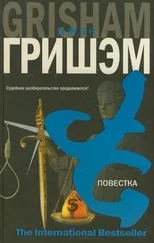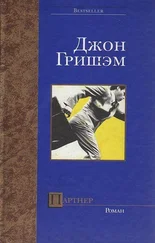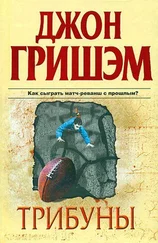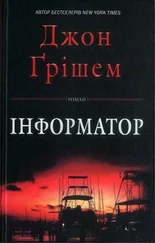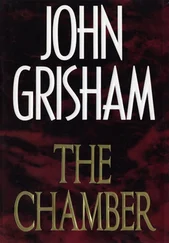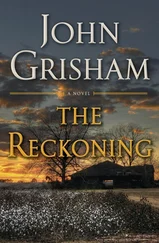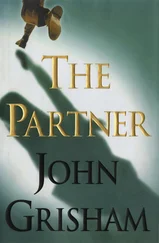We discuss the other four cases, none of which are facing a serious deadline.
I broach our most unpleasant issue when I ask Vicki, “What about the budget?”
She smiles as always and says, “Oh, we’re broke.”
Mazy says, “I need to make a phone call.” She stands, pecks me on the forehead and says, “Nice work, Post.”
The budget is something she prefers to avoid, and Vicki and I don’t burden her with it. She steps out and returns to her office.
Vicki says, “We got the check from the Cayhill Foundation, fifty grand, so we can pay the bills for a few months.” It takes about a half a million dollars a year to fund our operations and we get this by soliciting and begging small nonprofits and a few individuals. If I had the stomach for fund-raising I would spend half my days on the phone, and writing letters, and making speeches. There is a direct correlation between the amount of money we can spend and the number of innocent people we can exonerate, but I simply don’t have the time or desire to beg. Vicki and I decided long ago that we could not handle the headaches of a large staff and constant pressure to raise money. We prefer a small, lean operation, and lean we are.
A successful exoneration can take many years and consume at least $200,000 in cash. When we need the extra money, we always find it.
“We’re okay,” she says, as always. “I’m working on grants and hounding a few donors. We’ll survive. We always do.”
“I’ll make some calls tomorrow,” I say. As distasteful as it is, I force myself to spend a few hours each week cold-calling sympathetic lawyers and asking for money. I also have a small network of churches I hit up for checks. We’re not really a ministry as such, but calling ourselves one does not hurt our efforts.
Vicki says, “I assume you’re going to Seabrook.”
“I am. I’ve made my decision. We’ve kicked it around for three years and I’m sort of tired of the discussion. We’re convinced he’s innocent. He’s been in prison for twenty-two years and has no lawyer. No one is working his case and I say we go in.”
“Mazy and I are on board.”
“Thanks.” The truth is that I make the final decision about whether to take a case or pass. We evaluate a case for a long time and know the facts as intimately as possible, and if one of the three becomes adamantly opposed to our representation, then we back off. Seabrook has tormented us for a long time, primarily because we’re certain our next client was framed.
Vicki says, “I’m roasting Cornish hens tonight.”
“Bless you. I was waiting on an invitation.” She lives alone and loves to cook, and when I’m in town we usually gather at her cozy little bungalow four blocks away and partake of a long meal. She worries about my health and eating habits. Mazy worries about my love life, which is nonexistent and therefore doesn’t bother me at all.
5
The town of Seabrook is in the rural backwaters of north Florida, far away from the sprawling developments and retirement villages. Tampa is two hours to the south, Gainesville an hour to the east. Though the Gulf is only forty-five minutes away, on a two-lane road, the coastline there has never attracted the attention of the state’s manic developers. With 11,000 people, Seabrook is the seat of Ruiz County and the center for most of the commercial activity in a neglected area. The population drain has been stymied somewhat by a few retirees attracted to cheap living in mobile home parks. Main Street hangs on, with few empty buildings, and there are even some large discount houses on the edge of town. The handsome, Spanish-style courthouse is well preserved and busy, and two dozen or so lawyers tend to the mundane legal business of the county.
Twenty-two years ago, one of them was found murdered in his office, and for a few months Seabrook made the only headlines in its history. His name was Keith Russo, age thirty-seven at the time of his death. His body was found on the floor behind his desk with blood everywhere. He had been shot twice in the head with a 12-gauge shotgun, and there wasn’t much left of his face. The crime scene photos were grisly, even sickening, at least for some of the jurors. He was alone in his office working late that fateful December evening. Shortly before he died, the electricity to his office was cut off.
Keith had practiced law in Seabrook for eleven years with his partner and wife, Diana Russo. They had no children. In the early years of their firm, they had worked hard as general practitioners, but both wanted to step up their game and escape the dreariness of writing wills and deeds and filing no-fault divorces. They aspired to be trial lawyers and tap into the state’s lucrative tort system. At that level, though, competition proved fierce and they struggled to land the big cases.
Diana was at the hair salon when her husband was murdered. She found his body three hours later when he didn’t come home and wouldn’t answer the phone. After his funeral, she became reclusive and mourned for months. She closed the office, sold the building, and eventually sold their home and returned to Sarasota, where she was from. She collected $2 million in life insurance and inherited Keith’s interest in their joint assets. The life insurance policy was discussed by investigators but not pursued. Since the early days of their marriage the couple had believed strongly in life insurance protection. There was an identical policy on her life.
Initially there were no suspects, until Diana suggested the name of one Quincy Miller, a former client of the firm, and a very disgruntled one at that. Four years before the murder, Keith had handled a divorce for Quincy, and the client was less than satisfied with the result. The judge hit him for more alimony and child support than he could possibly afford, and it wrecked his life. When he was unable to pay more attorney’s fees for an appeal, Keith dropped the matter, terminated his representation, and the deadline for the appeal expired. Quincy earned a good salary as a truck driver for a regional company but lost his job when his ex-wife garnished his paychecks for delinquent obligations. Unable to pay, he filed for bankruptcy and eventually fled the area. He was caught, returned to Seabrook, thrown in jail for nonpayment and served three months before the judge turned him loose. He fled again and was arrested for selling drugs in Tampa. He served a year before being paroled.
Not surprisingly, he blamed all of his problems on Keith Russo. Most of the town’s lawyers quietly agreed that Keith could have been more assertive in his representation. Keith hated divorce work and considered it demeaning for an aspiring big-time trial lawyer. According to Diana, Quincy stopped by the office on at least two occasions, threatened the staff, and demanded to see his ex-lawyer. There was no record of anyone calling the police. She also claimed that Quincy called their home phone with threats, but they were never concerned enough to change numbers.
A murder weapon was never found. Quincy swore he had never owned a shotgun, but his ex-wife told the police that she believed he had one. The break in the case came two weeks after the murder when the police confiscated his car with a search warrant. In the trunk they found a flashlight with tiny specks of a substance splattered across the lens. They assumed it was blood. Quincy maintained that he had never seen the flashlight, but his ex-wife said she believed it belonged to him.
A theory was quickly adopted and the murder was solved. The police believed that Quincy carefully planned the attack and waited until Keith was working late and alone. He cut off the electricity at a meter box behind the office, entered through the unlocked rear door, and, since he had been in the office several times, knew exactly where to find Keith. Using a flashlight in the darkness, he burst into Keith’s office, fired two shotgun blasts, and fled the scene. Given the amount of blood at the scene, it seemed reasonable that many items in the office got splattered.
Читать дальше


